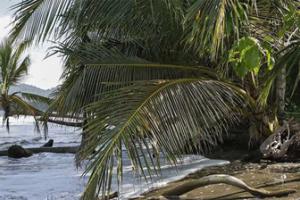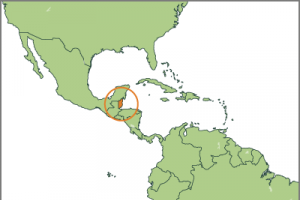Belize
Bulletin articles
29 April 2010
The concept of protected areas, born in the United States in the nineteenth century as an idea of conservation by establishing “national parks,” was part of the colonization of the “Wild West” and, in many cases served as an instrument to appropriate indigenous peoples’ territory, handing it over to the States, research centres or corporate interests. Although an international organization such as the International Union for the Conservation of Nature (IUCN) has acknowledged that when establishing protected areas, indigenous peo
Bulletin articles
3 April 2003
In November 2001, a Belizean court had ruled in favour of the construction of a hydro-electric dam on the upper Macal river by Belize Electricity Limited (BEL), the majority of which is owned by Fortis, Inc. of St. John's, Newfoundland, Canada, (see WRM bulletins 44 and 54). The Belizean government has privatised its electricity industry, just keeping a minority share of BEL. Fortis Inc. is the owner of both the energy distribution company in Belize (Belize Electricity Limited, BEL) and the largest energy supplier in the country (Belize Electricity Company, BECOL).
Bulletin articles
21 January 2002
The Belize National Environmental Appraisal Committee (NEAC) announced in November 2001 that the government has granted environmental clearance for the construction of a proposed hydro-scheme (see WRM bulletin 44) slated for an undisturbed river valley within the Central Maya Mountains near the Guatemalan border, conditional upon the development of an Environmental Compliance Plan (ECP), which will incorporate the mitigation measures identified in the environmental impact assessment, along with others recommended during the evaluation process.
Bulletin articles
12 March 2001
In the last issue of our bulletin we included an article on Belize, calling it a country "where forests can still be saved." We should have added: "if the government and a Canadian power company allows it." The fact is that the Canadian based Fortis Inc. -- which also holds a majority stake in Belize Electricity Ltd.-- is planning to build a dam along a branch of the Macal River.
Bulletin articles
13 February 2001
Much of the Belizean territory is still covered by forests, which host an enormous diversity in plant and animal life. Those forests have however been exploited for centuries in an unsustainable manner. What the forest hides is the fact that the most commercially valuable hardwood species have all but disappeared, particularly mahogany.
Bulletin articles
17 September 2000
In 1999 local residents of Placencia Lagoon --a shallow water body fringed by mangroves and very rich in terrestrial and aquatic wildlife, located in southern Belize-- organized themselves to resist a project to build a two-lane causeway and a bridge across the Lagoon. The works would have caused a severe environmental impact, damaging ecotourism, the main activity in the area, as well as small scale fishing (see WRM Bulletin 23). A new threat is now pending on this rich ecosystem: industrial shrimp farming.
Bulletin articles
25 June 1999
Placencia Lagoon in southern Belize separates the Placencia Peninsula from the southern Belize mainland. Mangroves in the Lagoon are an essential component of the Placencia Peninsula estuary system, filtering inland water, protecting the coastline and serving as home to large numbers species of the tropical wildlife.
Bulletin articles
25 May 1999
With 22,960 square kilometres and 220,000 inhabitants Belize is the smallest and less populated country in Central America. 83% of its territory is covered by forests, most of them in a pristine state, and 40% of the country is now protected as parks and reserves. As in many other Southern countries dam megaprojects are a major problem for Belize's forests and people.


